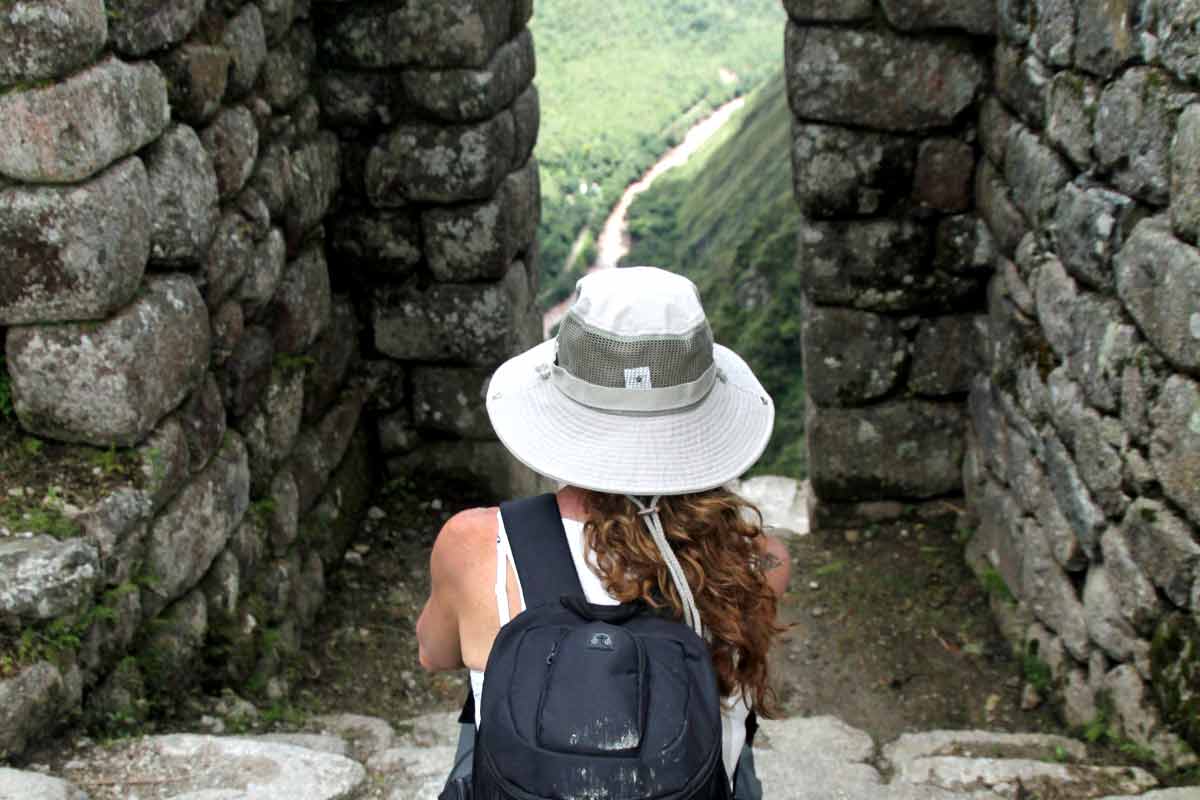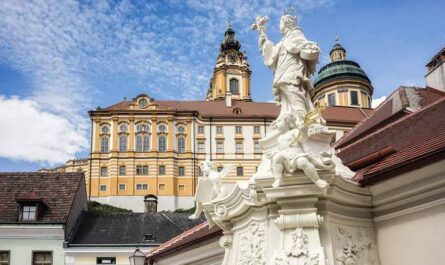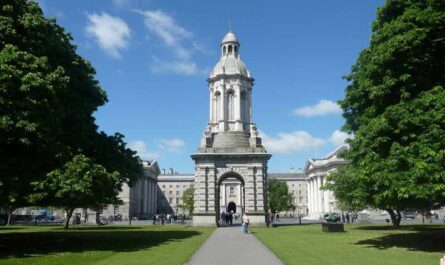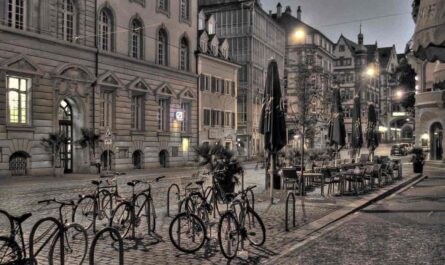What are some of the interesting facts about Bosnia and Herzegovina? Historically, Bosnia and Herzegovina has been a crossroads of civilizations, evidenced by its mix of Ottoman, Austro-Hungarian, and Slavic heritage. This cultural tapestry is reflected in its architecture, cuisine, and traditions, where mosques, cathedrals, and synagogues stand side by side in cities like Sarajevo and Mostar. In this article, I will talk about some interesting facts about Bosnia and Herzegovina. Keep reading
The natural landscape is equally diverse, featuring lush green mountains, serene lakes, and fast-flowing rivers. The Dinaric Alps dominate much of the terrain, offering opportunities for outdoor activities such as hiking, skiing, and rafting. The country’s rivers, notably the Neretva and Una, carve through picturesque valleys and provide stunning vistas.
Today, Bosnia and Herzegovina is a country rebuilding and reconciling after the conflicts of the 1990s, striving for stability and economic growth while preserving its rich cultural heritage. This nation of resilience and warmth continues to charm visitors with its hospitality, stunning landscapes, and deep-rooted history.
Interesting Facts About Bosnia and Herzegovina: History, Culture, Travel
Bosnia and Herzegovina, nestled in southeastern Europe, is a nation rich with history, culture, and natural beauty. Its unique geographical position on the Balkan Peninsula has shaped its diverse identity, blending Eastern and Western influences. The country shares borders with Croatia to the north, west, and south, Serbia to the east, and Montenegro to the southeast, while also boasting a small coastline along the Adriatic Sea. Here are some interesting facts about Bosnia and Herzegovina:
1. A Land Steeped in History
Bosnia and Herzegovina’s rich historical tapestry spans millennia, reflecting the diverse influences of successive civilizations. The region’s earliest inhabitants, the Illyrians, laid the foundations of its cultural identity, leaving behind archaeological remnants that attest to their ancient presence. Roman rule brought urbanization and infrastructure development, evident in remnants like the Roman bridge in the capital city of Sarajevo.
The Ottoman Empire’s centuries-long reign left an indelible mark, shaping Bosnia’s architecture, cuisine, and religious landscape with mosques and Turkish baths still prominent today. Later, Austro-Hungarian rule introduced modernization and cultural shifts, evident in Sarajevo’s neo-Renaissance and Secessionist buildings. Each era has contributed layers to Bosnia and Herzegovina’s complex heritage, creating a mosaic of traditions, languages, and customs that define its identity as a crossroads of civilizations in the heart of the Balkans.
2. Sarajevo: The Heart of the Nation
Sarajevo, Bosnia and Herzegovina’s capital, epitomizes the nation’s historical and cultural synthesis. The city’s skyline is a blend of Ottoman minarets, Austro-Hungarian facades, and contemporary structures, symbolizing its diverse heritage. Sarajevo’s Old Town (Baščaršija) transports visitors back in time with its cobbled streets, bustling bazaars, and ornate mosques like the Gazi Husrev-beg Mosque, showcasing Ottoman architectural splendor.
Austro-Hungarian influences are evident in the elegant buildings along Marshal Tito Street and the iconic City Hall (Vijećnica). Sarajevo’s multicultural ethos is celebrated through its vibrant arts scene, culinary delights, and spirited festivals that reflect the city’s resilience and creative spirit in the face of historical challenges.
3. Mostar: The Bridge and Beyond
Mostar, renowned for its picturesque Stari Most (Old Bridge), stands as a testament to Bosnia and Herzegovina’s cultural diversity and architectural brilliance. Built during the Ottoman era, this iconic bridge spans the emerald-green Neretva River, linking the town’s Muslim and Christian quarters. The bridge’s graceful arch and limestone construction exemplify Ottoman engineering prowess and symbolize reconciliation and unity.
Beyond the bridge, Mostar’s historic core showcases Ottoman-era mosques, traditional Turkish houses, and bustling markets where artisans craft copperware and carpets using centuries-old techniques. Mostar’s blend of cultural influences creates a captivating atmosphere that attracts visitors from around the world, offering a glimpse into Bosnia and Herzegovina’s rich historical legacy and enduring beauty.
4. A Tapestry of Religions
Bosnia and Herzegovina is a vibrant tapestry of religious diversity, where Islam, Orthodox Christianity, Catholicism, and Judaism have coexisted for centuries. Islam, practiced by the majority of Bosniaks, manifests in the region’s mosques adorned with elegant minarets and intricate calligraphy. Orthodox Christianity, followed by Serbs, is represented by monasteries and churches with Byzantine-inspired domes and iconography.
Catholicism, embraced by Croats, is evident in churches adorned with Baroque ornamentation and Romanesque architecture. Additionally, Bosnia and Herzegovina’s Jewish community, though small, has left an indelible mark with synagogues and cultural contributions in Sarajevo and other cities. This religious diversity underscores the nation’s tolerance and pluralism, fostering a cultural mosaic where interfaith dialogue and mutual respect form integral components of societal harmony and national identity.
5. Scars of War
The Bosnian War (1992-1995) left profound scars on Bosnia and Herzegovina, challenging its unity and stability while devastating communities and infrastructure. The conflict, marked by ethnic and religious tensions, resulted in widespread atrocities, displacement, and loss of life. Cities like Sarajevo endured prolonged sieges and bombings, while atrocities such as the Srebrenica genocide highlighted the brutality of the war. Since the signing of the Dayton Peace Accords in 1995, Bosnia and Herzegovina has embarked on a journey of reconciliation and reconstruction, striving to heal wounds and rebuild communities.
Efforts towards justice, truth-seeking, and societal reconciliation continue, supported by international efforts and grassroots initiatives aimed at fostering dialogue, understanding, and sustainable peace. Despite the challenges, Bosnia and Herzegovina’s resilience shines through in its determination to forge a peaceful and prosperous future, guided by the lessons of its turbulent past towards a unified and harmonious society.
6. The Call to Prayer
Bosnia and Herzegovina’s cultural landscape is enriched by the melodious call to prayer emanating from mosques, which reverberates across cities and towns throughout the country. Five times a day, the adhan echoes through the air, signaling the faithful to pause and engage in prayer, a tradition deeply embedded in Bosnia’s Islamic heritage. The call to prayer, recited in a melodious and soul-stirring manner by muezzins, creates a serene and evocative soundscape, contributing to the rhythmic pulse of daily life.
Beyond its religious significance, the adhan serves as a reminder of Bosnia and Herzegovina’s multicultural fabric, where diverse faiths peacefully coexist, enriching the country’s social tapestry with their distinct contributions to the nation’s cultural identity.
7. Burek: A National Favorite
Burek holds a cherished place in Bosnia and Herzegovina’s culinary tradition as a beloved national dish enjoyed across generations. This savory pastry, typically made with flaky phyllo dough and filled with minced meat, cheese, spinach, or potatoes, embodies the essence of Bosnian comfort food. Burek’s origins trace back to the Ottoman era, and its popularity endures as a staple in households, bakeries, and restaurants alike.
Whether enjoyed as a hearty breakfast, a satisfying snack, or a main course, burek captivates taste buds with its rich flavors and crispy texture. Its widespread availability and versatility make it a culinary symbol of Bosnia and Herzegovina’s culinary heritage, celebrated for its simplicity, affordability, and cultural significance.
8. Ćevapi: A Street Food Delight
Ćevapi, small grilled sausages bursting with flavor, are a quintessential street food delight synonymous with Bosnia and Herzegovina’s culinary landscape. These seasoned ground meat sausages, traditionally made from a blend of beef, lamb, and spices, are grilled to perfection and served nestled in somun (a type of flatbread) with chopped onions and a dollop of kajmak, a creamy dairy condiment.
The smoky aroma of Ćevapi grilling over charcoal fires beckons locals and visitors alike to indulge in this savory treat, often accompanied by ajvar (a roasted red pepper and eggplant relish) and a side of fresh vegetables. Whether enjoyed at bustling street stalls, family gatherings, or local restaurants, Ćevapi embodies Bosnia and Herzegovina’s passion for hearty, flavorful street fare, offering a taste of tradition and culinary craftsmanship with every bite.
9. Bosnian Coffee Ritual
Bosnian coffee, a cherished cultural tradition, beckons locals and visitors alike to partake in a ritualistic experience steeped in history and hospitality. This strong, aromatic coffee is prepared using finely ground beans boiled in a džezva (a small metal pot) and served in a fildžan (a small handleless cup). Bosnian coffee is enjoyed leisurely, encouraging conversation and connection as friends and family gather to savor each sip.
The coffee’s robust flavor is complemented by sweet treats such as Turkish delight or lokum, enhancing the sensory experience. This centuries-old ritual transcends mere caffeine consumption; it fosters social bonds, preserves cultural heritage, and offers a moment of respite amidst the bustle of daily life. Bosnian coffee’s enduring popularity underscores its role as a symbol of hospitality and community in Bosnia and Herzegovina’s vibrant social fabric.
10. The Dinar: The Local Currency
The Bosnian marka (convertible marka or BAM) serves as the official currency of Bosnia and Herzegovina, colloquially referred to as the dinar in everyday conversation. Introduced in 1998 to stabilize the country’s post-war economy, the marka replaced the Yugoslav dinar and quickly gained acceptance as a symbol of financial stability and national sovereignty. Denominated in banknotes and coins, the marka facilitates daily transactions across Bosnia and Herzegovina’s diverse markets, shops, and businesses.
Its name, dinar, harkens back to the region’s historical ties to the broader Balkan and Ottoman monetary systems, reflecting a blend of tradition and modern economic practices. The marka’s role in everyday life underscores its significance as a unit of exchange and a symbol of Bosnia and Herzegovina’s economic resilience and integration into the global marketplace.
11. The Beauty of the Dinaric Alps
Bosnia and Herzegovina’s natural splendor is epitomized by the majestic Dinaric Alps, a rugged mountain range stretching across the western Balkans. These dramatic peaks, characterized by limestone cliffs and lush forests, offer outdoor enthusiasts a paradise for hiking, mountaineering, and skiing adventures. The Dinaric Alps provide breathtaking vistas of pristine lakes, deep gorges, and alpine meadows teeming with diverse flora and fauna.
In winter, snow-capped peaks transform into a playground for skiing and snowboarding, with resorts like Jahorina and Bjelašnica attracting winter sports enthusiasts from around the world. The Dinaric Alps not only showcase Bosnia and Herzegovina’s natural beauty but also serve as a sanctuary for ecological diversity and outdoor recreation, inviting visitors to explore its untamed wilderness and immerse themselves in the country’s scenic landscapes.
12. Trebišnjica River and Waterfalls
The Trebišnjica River meanders through Bosnia and Herzegovina, renowned for its picturesque waterfalls that cascade down rocky cliffs, creating mesmerizing natural spectacles. Among these, Kravica and Koćuša waterfalls stand out for their striking beauty and tranquil surroundings, offering refreshing retreats amidst lush greenery and rugged terrain. Kravica Waterfall, in particular, captivates with its emerald-green pools and thundering cascades, inviting visitors to swim, picnic, and bask in nature’s splendor.
Koćuša Waterfall, nestled in the Herzegovina region, enchants with its secluded charm and pristine waters, making it a hidden gem for nature lovers and photographers alike. The Trebišnjica River and its waterfalls exemplify Bosnia and Herzegovina’s natural diversity and scenic landscapes, beckoning adventurers to explore and discover its hidden treasures.

13. Mostar Diving Competition
Mostar, famed for its iconic Stari Most (Old Bridge), hosts an exhilarating diving competition each year that attracts daredevils and spectators from around the globe. The traditional diving competition, known as “mostari,” involves daring competitors plunging from the historic bridge into the emerald waters of the Neretva River below. Participants showcase acrobatic skills and courage as they leap from the 24-meter-high bridge, aiming to impress judges and spectators alike with their precision and technique.
The event, steeped in cultural heritage and sporting tradition, symbolizes Mostar’s resilience and unity, celebrating the city’s rich history and architectural marvels. The Mostar diving competition not only thrills audiences with adrenaline-pumping feats but also fosters community pride and international camaraderie, highlighting Bosnia and Herzegovina’s vibrant cultural heritage and adventurous spirit.
14. The Baščaršija: A Shopping Paradise
Sarajevo’s Baščaršija, a historic Ottoman marketplace dating back to the 15th century, enchants visitors with its labyrinthine alleys, bustling bazaars, and artisan workshops. This vibrant cultural hub, nestled in Sarajevo’s Old Town, evokes the ambiance of centuries past with its oriental architecture, cobblestone streets, and towering minarets. The Baščaršija beckons shoppers with a kaleidoscope of offerings, from handcrafted copperware and traditional carpets to intricate jewelry and aromatic spices.
Local artisans showcase their craftsmanship in small studios and workshops, preserving centuries-old techniques passed down through generations. As one of Sarajevo’s most iconic landmarks, the Baščaršija not only serves as a premier shopping destination but also a living testament to Bosnia and Herzegovina’s cultural heritage and commercial vitality, inviting visitors to immerse themselves in its vibrant atmosphere and storied past.
15. UNESCO World Heritage Sites
Bosnia and Herzegovina boasts several UNESCO World Heritage Sites that embody its rich cultural and historical legacy. Mostar’s Old Bridge (Stari Most), an architectural marvel spanning the Neretva River, is celebrated for its elegant design and symbolic significance as a symbol of unity and reconciliation. In Višegrad, the Mehmed Paša Sokolović Bridge, an exquisite Ottoman-era masterpiece, spans the Drina River and serves as a testament to Bosnia’s architectural prowess and cultural diversity.
These UNESCO-designated sites preserve Bosnia and Herzegovina’s tangible heritage, showcasing architectural brilliance, historical significance, and enduring cultural traditions that resonate with visitors from around the world. By safeguarding these cultural treasures, Bosnia and Herzegovina underscores its commitment to preserving its past while celebrating its cultural diversity and contributions to global heritage.
16. The Importance of Family
Family plays a pivotal role in Bosnian society, serving as the cornerstone of social structure and identity. Bosnian families are characterized by strong bonds and traditions that are deeply rooted in cultural heritage and values passed down through generations. Extended family networks often form tight-knit communities where mutual support, solidarity, and communal gatherings are cherished.
Respect for elders and care for younger generations are integral to familial dynamics, shaping individual identities and societal norms. Family gatherings, marked by feasts and celebrations, provide opportunities for reaffirming bonds and transmitting cultural customs, ensuring continuity of traditions amidst modern challenges. In Bosnian culture, the concept of family extends beyond biological ties to encompass close friendships and communal affiliations, embodying resilience, unity, and collective strength in navigating life’s joys and hardships.
17. Sevdah: The Soulful Music
Sevdah, a soul-stirring genre of traditional Bosnian music, evokes profound emotions of love, longing, and melancholy, resonating deeply with the country’s cultural soul. Originating from the Ottoman era, sevdah combines Turkish, Balkan, and Mediterranean influences, characterized by haunting melodies, poetic lyrics, and expressive vocals. Instruments such as the accordion, violin, and šargija (a traditional string instrument) accompany sevdah songs, enhancing their emotive power and storytelling allure.
Themes of unrequited love, yearning for distant lands, and nostalgia for lost times permeate sevdah lyrics, reflecting the universal human experiences of longing and emotional depth. Today, sevdah remains a cherished cultural treasure, preserved and performed in homes, cafes, and cultural festivals across Bosnia and Herzegovina, where its timeless melodies continue to captivate audiences and honor the country’s rich musical heritage.
18. The National Costume
Bosnia and Herzegovina’s traditional “nošnja,” or national costume, embodies the country’s vibrant cultural identity and is worn proudly during special occasions and cultural events. The nošnja varies by region, with each ensemble distinguished by its intricate designs, vibrant colors, and handmade embellishments that reflect local customs and historical influences. Women’s costumes feature elaborately embroidered dresses, aprons, and headscarves adorned with symbols of fertility, prosperity, and protection. Men’s attire includes vests, trousers, and distinctive caps or fezzes, often complemented by sashes and decorative belts.
The nošnja not only serves as a visual expression of Bosnian pride and heritage but also symbolizes continuity with the past and collective belonging within communities. By preserving and showcasing the national costume, Bosnians celebrate cultural diversity, honor ancestral traditions, and cultivate a sense of identity rooted in shared history and enduring craftsmanship.
19. The Importance of Hospitality
Bosnians are renowned for their warm hospitality and genuine welcoming nature towards visitors, reflecting a deeply ingrained cultural value of generosity and kindness. Hospitality is considered a sacred duty, extending beyond mere etiquette to embody genuine care, respect, and attentiveness towards guests. Whether welcoming friends, family, or strangers, Bosnians embrace guests with open arms, offering traditional Bosnian coffee, homemade sweets, and engaging conversations that foster connection and camaraderie.
Guests are treated as honored members of the household, with gestures of hospitality symbolizing trust, friendship, and mutual understanding. This tradition of hospitality enriches interpersonal relationships, promotes cultural exchange, and reinforces social cohesion within Bosnian communities, embodying the spirit of unity and goodwill that transcends cultural differences and fosters lasting friendships.
20. The Cyrillic and Latin Scripts
Bosnia and Herzegovina’s linguistic diversity is reflected in its use of both the Cyrillic and Latin scripts, which coexist as official alphabets in the country’s multilingual landscape. The Cyrillic script, inherited from Orthodox Christian traditions and Slavic heritage, is predominantly used by Bosnian Serbs, particularly in Republika Srpska and certain municipalities. In contrast, the Latin script, introduced during Austro-Hungarian rule and widely adopted across Bosnia and Herzegovina, serves as the primary script for Bosnian, Croatian, and Bosniak communities.
This dual-script system underscores Bosnia and Herzegovina’s cultural plurality and historical influences, facilitating linguistic diversity and preserving linguistic identities within the country’s complex socio-political framework. Both scripts are employed in official documents, educational materials, media outlets, and public signage, ensuring linguistic inclusivity and promoting intercultural understanding among Bosnia’s diverse population.
21. The End of Yugoslavia
The dissolution of Yugoslavia in the early 1990s had profound repercussions for Bosnia and Herzegovina, marking a tumultuous period that reshaped its political, social, and economic landscape. As Yugoslavia disintegrated amid ethnic tensions and nationalist fervor, Bosnia and Herzegovina declared independence in 1992, triggering a brutal civil war characterized by ethnic conflict between Bosniaks, Serbs, and Croats.
The war, marked by widespread atrocities and humanitarian crises, devastated communities, displaced millions, and left lasting scars on the country’s infrastructure and social fabric. The breakup of Yugoslavia fundamentally altered Bosnia and Herzegovina’s trajectory, leading to international intervention, peace negotiations, and efforts to rebuild a fractured nation amidst deep-seated divisions and challenges to reconciliation.
22. The Dayton Accords
Signed in 1995, the Dayton Accords brought an end to the Bosnian War, halting the violence and establishing a framework for peace and governance in Bosnia and Herzegovina. Named after the Ohio city where negotiations took place, the accords introduced a complex political structure comprising two entities—Republika Srpska and the Federation of Bosnia and Herzegovina—alongside a tripartite presidency representing Bosniaks, Serbs, and Croats.
The Dayton Agreement aimed to preserve Bosnia’s territorial integrity while granting significant autonomy to its constituent parts, fostering a delicate balance of power and governance that continues to shape the country’s political dynamics. Despite achieving peace, the Dayton Accords remain a subject of debate regarding their long-term viability in addressing systemic challenges, ethnic tensions, and aspirations for European integration.
23. The Country’s Nickname
Bosnia and Herzegovina is affectionately referred to as “The Heart-shaped Land” due to its distinctive geographical resemblance to a heart when viewed on maps. Nestled in the heart of the Balkans, the country’s geographic contours, defined by the convergence of mountains, rivers, and valleys, evoke a symbolic representation of warmth, hospitality, and cultural richness.
This endearing nickname underscores Bosnia and Herzegovina’s geographical significance as a crossroads of civilizations, where diverse cultures, religions, and traditions converge to form a unique mosaic of heritage and identity. The heart-shaped symbolism also resonates metaphorically, encapsulating the country’s resilience, unity, and enduring spirit in overcoming historical challenges and forging a path toward peace, stability, and prosperity.
24. The Olympic Spirit
Sarajevo proudly hosted the Winter Olympics in 1984, marking a historic moment that showcased the city’s cosmopolitan charm, cultural heritage, and athletic prowess on the global stage. The Games, celebrated for their organization and hospitality, transformed Sarajevo into an international hub of sportsmanship and cultural exchange, attracting athletes and visitors from around the world.
Venues like the iconic Zetra Stadium and Jahorina Mountain provided spectacular settings for competitive events, while Sarajevo’s vibrant cultural scene and hospitable atmosphere left a lasting impression on participants and spectators alike. The legacy of the 1984 Winter Olympics endures as a symbol of Sarajevo’s resilience and spirit, despite later turmoil, underscoring the city’s enduring commitment to embracing its multicultural heritage and fostering international goodwill through sports and community engagement.
25. The Baščaršija Mosques
The Baščaršija, Sarajevo’s historic Ottoman marketplace, is home to several magnificent mosques that exemplify Bosnia and Herzegovina’s rich architectural heritage and religious diversity. Among these, the Gazi Husrev-beg Mosque stands out as a masterpiece of Ottoman architecture, renowned for its elegant design, towering minaret, and intricate calligraphy adorning its interior. Motivation – Mind – Success – Thinking – Productivity – Happiness
Built in the 16th century by Bosnia’s Ottoman rulers, the mosque continues to serve as a spiritual center and cultural landmark, attracting worshippers, tourists, and scholars alike with its serene ambiance and historical significance. The Baščaršija’s mosques, including the Emperor’s Mosque and the Ali Pasha Mosque, offer visitors a glimpse into Sarajevo’s multicultural past and enduring legacy as a vibrant hub of religious tolerance, architectural splendor, and artistic expression within Bosnia and Herzegovina’s cultural mosaic.



